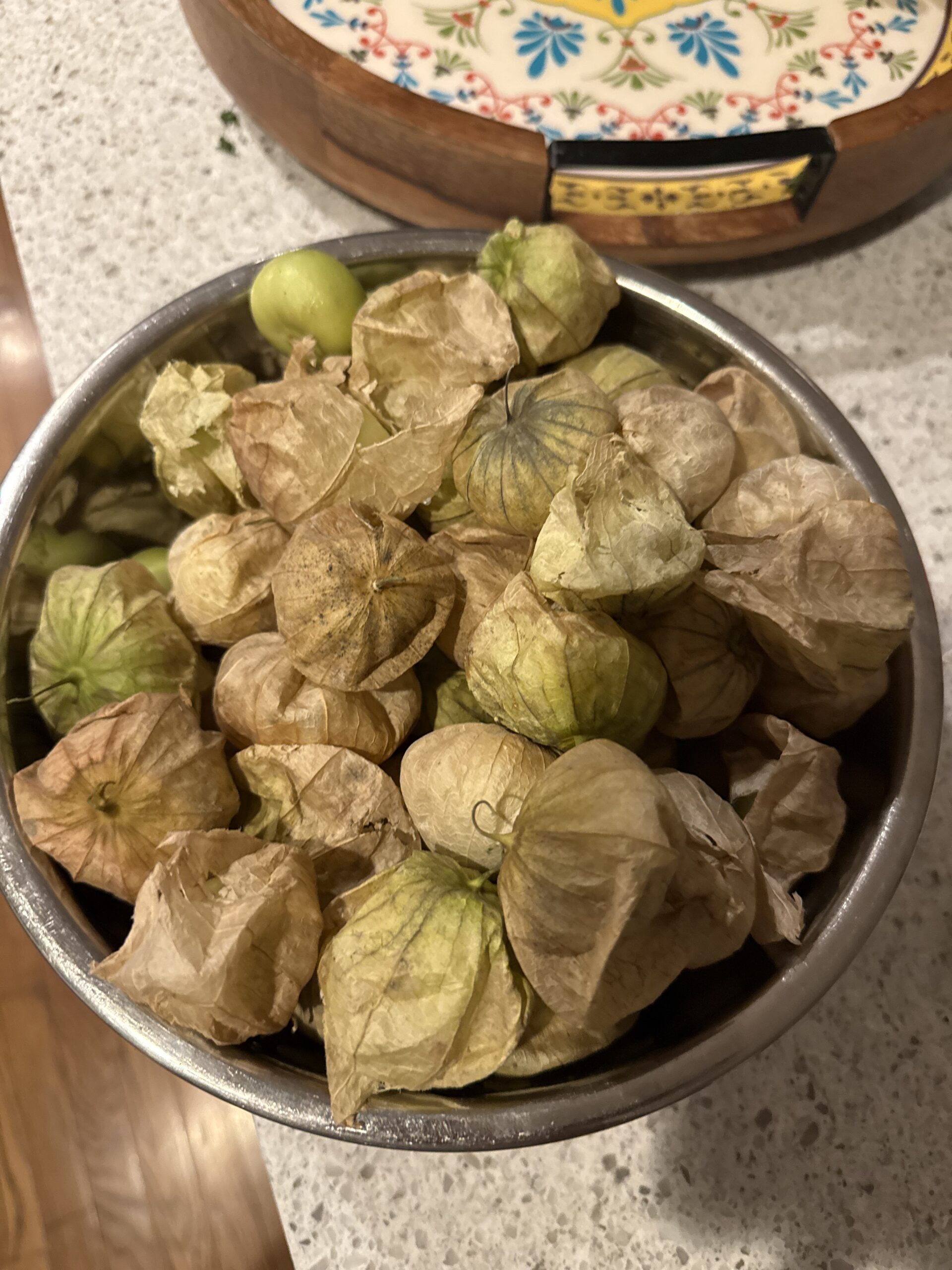 Let’s settle this once and for all: tomatoes and tomatillos are not the same thing. Not even close. They may both be round. They may both go in salsa. But that’s about where the family resemblance ends. Trying to substitute one for the other is like sending your child to school in swimwear because it technically counts as clothes.
Let’s settle this once and for all: tomatoes and tomatillos are not the same thing. Not even close. They may both be round. They may both go in salsa. But that’s about where the family resemblance ends. Trying to substitute one for the other is like sending your child to school in swimwear because it technically counts as clothes.
Yes, it’s time we all got a little more serious about this culinary confusion. And by serious, we mean mildly educational, dryly sarcastic, and just informative enough to give you smug confidence at your next potluck.
The Tomato: Friendly, Familiar, and Usually Not Wearing a Paper Cape
The tomato needs no introduction. But we’ll give it one anyway, because why not?
Native to western South America and globally beloved, the tomato is that reliable friend who shows up everywhere—from pizza sauce to BLTs to those “rustic” Pinterest salads where the only seasoning is lighting. It’s bright, juicy, and frankly a little high-maintenance when it comes to storage. Refrigerate it and it sulks. Leave it on the counter too long and it collapses into a tragic heap of regret.
Tomatoes come in colors ranging from firetruck red to confused purples and yellows. They’re part of the nightshade family—yes, like eggplants and those toxic berries your toddler almost ate once. And yes, they are technically fruits, but try telling that to someone mid-pasta and see how quickly you get uninvited from dinner.
The Tomatillo: The Tomato’s Mysterious, Green-Glowing Cousin
Then there’s the tomatillo—green, small, and shrouded in a thin husk, as though it’s perpetually attending a masquerade ball for introverts. Native to Mexico and a staple of traditional dishes like salsa verde, tomatillos are not green tomatoes. Let’s say that louder for the people in the back: not green tomatoes.
Tomatillos are a different plant entirely, despite the name’s not-so-subtle implication of “I’m kind of like a tomato, just smaller and more fun at parties.” Botanically, they’re also in the nightshade family, because apparently everything in this produce aisle has a dramatic backstory.
The tomatillo has a tart, tangy flavor—like a tomato that grew up in a more intense neighborhood and learned how to stand up for itself. It’s not juicy in the way tomatoes are; it’s firmer, more acidic, and frankly, more interesting. It’s the kid who brings a weird homemade snack to lunch and somehow gets the entire class hooked on it.
Let’s Talk Texture and Taste (Or Why Your Salsa Turned Out So Wrong)
Tomatoes: soft, sweet, juicy. They burst when you bite into them and then drip all over your white shirt like some kind of condiment-based betrayal. They’re ideal for sauces, salads, and any dish where you want to pretend you cooked when you really just chopped.
Tomatillos: firm, zesty, and tart with a slightly sticky surface once you remove that papery husk—which, yes, is inedible, even though someone will try. Roast them, and they develop a smoky depth that tomatoes can only dream of. Use them raw, and they’ll add a bright, citrusy edge that makes your tomato-based salsa look like it’s wearing orthopedic shoes.
Trying to swap one for the other in a recipe is like swapping a goldfish for a golden retriever. Technically, yes, they’re both pets. But only one will fetch a stick, and the other might die if you shake it too hard.
Culinary Uses: Who Belongs Where
Tomatoes are team players. They blend in, absorb flavors, and rarely overpower anything—sort of like your friend who always RSVPs “maybe” and then shows up with wine. They’re good in stews, soups, sauces, and on everything from burgers to bruschetta.
Tomatillos, meanwhile, don’t do “subtle.” They come in hot with flavor, personality, and the kind of acidic bite that makes you reevaluate your life choices—in the best way. They shine in Mexican cuisine, particularly in salsa verde, enchilada sauces, and anything requiring that magical balance of bright and bold.
So… Can You Swap Them?
Short answer: no. Long answer: absolutely not.
Could you physically replace tomatoes with tomatillos in a recipe? Sure, if you enjoy disappointing outcomes and explaining things to hungry people. Could you replace tomatillos with tomatoes in your salsa verde? Yes, if you enjoy being wrong and having your guests silently judge you.
They are not interchangeable unless your goal is chaos. Which, fine, some households lean into that. But just know what you’re getting into. Tomatoes are mellow and versatile; tomatillos are punchy and specific. It’s like replacing your babysitter with a magician. Things will get weird.
The Final Verdict: Know Your Green Things
While both tomatoes and tomatillos have their place in the produce pantheon, it’s important—nay, vital—that we stop treating them like the same thing. One is the familiar comfort food MVP. The other is the bold, husk-wrapped flavor bomb that zips straight from the market into your blender like a culinary dare.
So next time you’re shopping for salsa ingredients or explaining vegetables to your child who thinks anything green is suspicious, remember: tomatillos are not unripe tomatoes. They’re their own glorious, tart, husky selves.
And just like your kids, they don’t appreciate being confused for their siblings.
